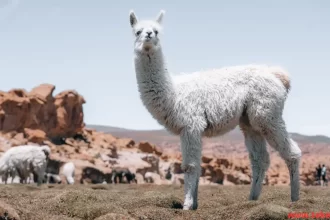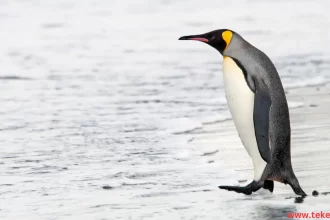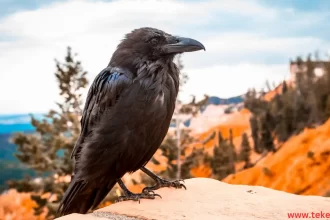Have you ever heard of birds that eat carrion and whose primary diet is fish and amphibians? The Jabiru stork is one of the birds that inhabit the North American continent, which is characterized by its strange shape and lifestyle.
Let’s learn more about it from teketrek.

Physical Characteristics:
The Jabiru stork is one of Stork species, it belongs to the Chordata division, the class of birds.
– The Jabiru is the tallest flying bird in Central and South America, measuring 47 to 55 inches in length and weighing 9.5 to 19.8 pounds.
– It has an impressive wingspan of 7.5 to 9.2 feet.
Jabiru habitat
The Jabiru stork inhabits the Western Hemisphere north to Mexico, and south to Argentina.
The most common areas are the wetlands of Brazil and Paraguay.
Jabiru is found near rivers and ponds, usually in large groups.
The Jabiru prefers open wetlands, especially flooded savannas.
The Jabiru can also be seen in freshwater swamps and open lands near water.
The Jabiru stork usually builds its nests on tall trees.
– Jabirus inhabit wetlands, coastal lagoons, rainforests, and marshes.
– They can be found from Mexico to Argentina, excluding areas west of the Andes.
– Common locations include Paraguay, Brazil, and other parts of Central and South America.
Behavior and Diet:
– Jabirus form lifelong pair bonds and live in groups near water sources.
– They build their enormous platform nests on tall trees, adding material to them each year.
– Their diet includes fish, snakes, reptiles, frogs, fresh carrion, insects, and other invertebrates.
– Remarkably, they can swallow fish up to eight inches long.
Conservation Status:
– The Jabiru is currently classified as “Least Concern”in terms of conservation status.
– However, habitat loss remains a significant threat.
.Fun Fact:
– Males are approximately 25% larger than females, but both sexes share similar features and plumage.
reproductive stages in Hoatzins:
Courtship Behavior:
– Wing-flapping displays are believed to be a form of courtship behavior.
– During courtship, males establish themselves at the nest site, and females approach the male until he accepts her presence. However, females are often rejected.
– The female opens her wings, while the male flaps slowly to maintain balance.
– The male shakes his head and strikes his bill against the female’s bill throughout the copulation period.
Pair Bond and Breeding
– Hoatzin pairs remain together for at least one breeding season, and they may stay together for multiple breeding seasons.
– Breeding typically begins near the end of the rainy season.
– Mating occurs between December and May.
Nest Building
– Hoatzins build nests at an elevation of 15-30 meters above the ground in tall, isolated trees.
– These trees are often near riverine forests or wetlands.
– Nests are usually deeper than their width, reaching up to 1 meter in width and 1.8 meters in depth.
– Nests are constructed from sticks and woody debris.
Egg Laying and Incubation:
– The female lays approximately 3 eggs with an average hatching success rate of up to 44%.
– After hatching, the parents begin leaving the chicks alone for longer periods.
– Fledging occurs after about 110 days from hatching, although the young birds remain dependent on their parents.
Dietary Habits of Hoatzins:
– Hoatzins consume significant quantities of fish, mollusks, insects, and amphibians.
– They also feed on reptiles and small mammals.
– During dry seasons, they are known to eat leaves and dead fish.
– Hoatzins forage in groups and often feed by wading in shallow water.
Ecological Importance:
– Hoatzins play a role in preventing the spread and development of diseases by consuming dead fish and carrion.
– They also impact preferred prey groups, such as small fish, mollusks, and amphibians.

FAQs about the Jabiru stork:
- What is special about the Jabiru?
It has the second-widest wingspan of any bird in North and South America, and is the longest flying bird in South America.
- What does a jabiru eat?
The Jabiru stork is a carnivorous bird, feeding on a range of reptiles, fish and amphibians.
- Can the Jabiru fly?
Yes he is able to fly, to help take off. It makes a series of small jumps.
In short, the Jabiru stork is an essential part of South America’s biodiversity. Immediate action must be taken to protect their natural habitats and preserve their environment. This is in order to ensure the continued presence of these wonderful and important birds in the ecosystem.




